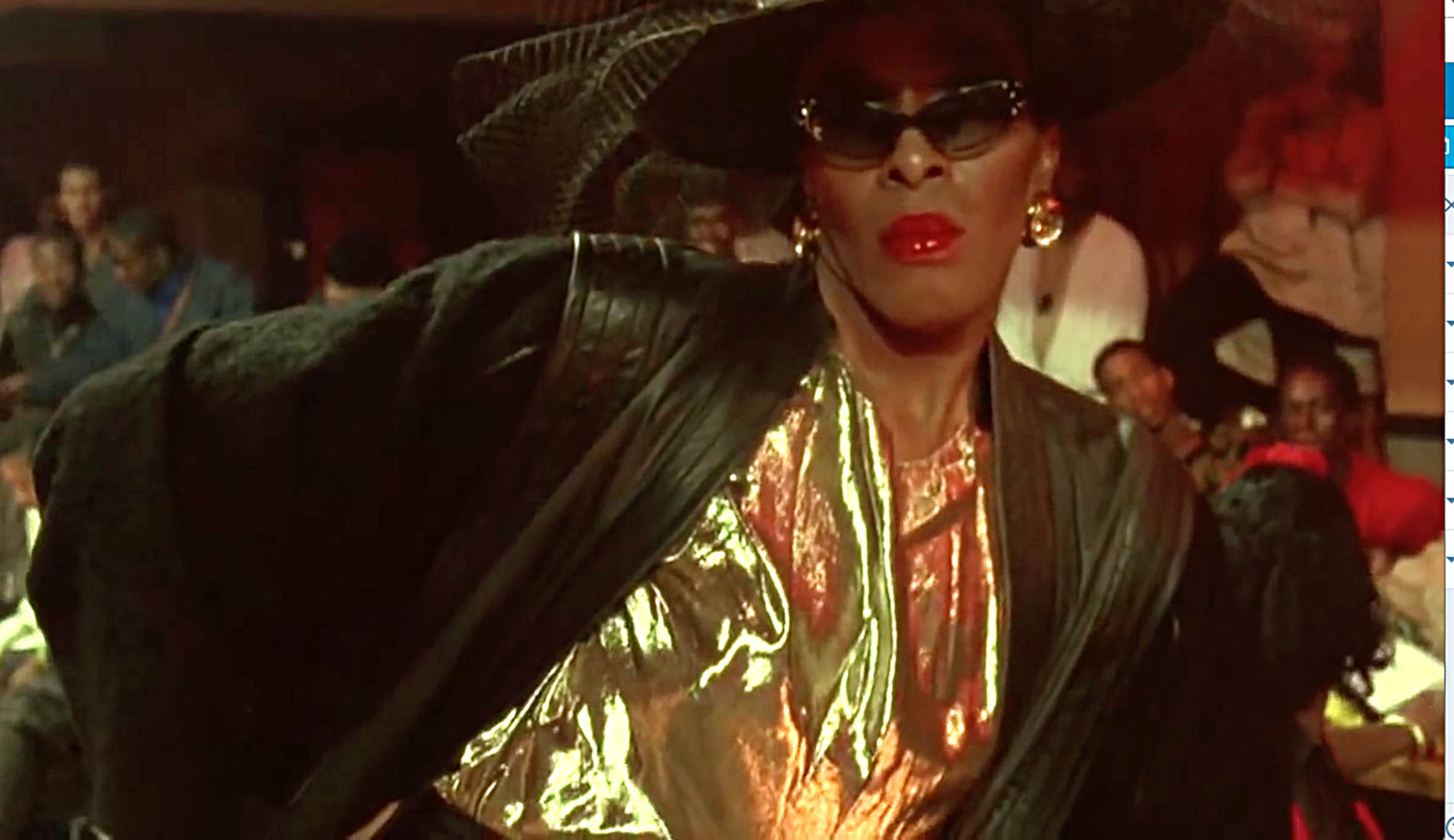Having a ball: Indya Moore parades a wedding dress as the character Angel in Pose, which explores New Yorks queer community in the 1980s. Photo: Sarah Shatz/FX
1987, Brooklyn, New York. You have spent your day submerged in the glamour and shade of Mother Elektra’s House of Abundance and helped her children to loot a museum of its royal exhibition containing Elizabethan-styled royal garb. You walk into a crowded ballroom as the master of ceremonies, Billy Porter, as Pray Tell, announces the next category: royalty.
Mother Elektra’s children enter the scene draped in their opulent plunder. The crowd’s cry of adoration develops into wailing when she concludes their royal walk wearing a show-stopping black gown embroidered in pearls and a fur cape.
The cops barge in. Mother Elektra sashays towards them with her hands elegantly before her, ready to be handcuffed. And thus concludes your immersive debut into the 2018 Ryan Murphy depiction of a 1980s ball, in the new FX series Pose.
The American screenwriter, director and producer has had couch potatoes glued to their screens with an assortment of small-screen blockbusters. He brought us Glee, The People versus OJ Simpson: American Crime Story and The Assassination of Gianni Versace: American Crime Story. And after signing a $300-million contract with Netflix for shows and documentaries last year, Murphy has no intentions to stop.
Loosely based on Jennie Livingston’s Paris Is Burning, this latest addition to Murphy’s film-ography is a musical epic that transports the viewer back to the loud and proud ball scene in a way that pays homage to the documentary’s characters. At the same time, Murphy tries to cast their narratives forward.
In this 1980s ballroom scene, the queer community of New York gathers in their glittering glamour and glory to make meaning of their unfavoured reality. In its first episode, one of the leading characters, Blanca Evangelista, describes it as a “gathering of people who are not welcome to gather anywhere else, a celebration of a life that the rest of the world does not deem worthy of celebration”.
Although the gatherings may seem to play in pageant territory, their overarching objective is not to compete. Ball culture is rooted in the necessity of community and the defiance of racism and transphobia.
Although Paris Is Burning focuses on how its characters fit into the ball scene, this series uses their stories to delve into a narrative that goes beyond ball gatherings.

Revisited: Pose has its roots in the documentary Paris Is Burning, about the Harlem balls and the ‘houses’ which provided a sense of family. Photo: Supplied.
The writing achieves this by threading into Pose subplots that took place in parallel to the rise of the ball scene. The subplots include the HIV epidemic in the lesbian, gay, bisexual and transgender community, the building of Donald Trump’s empire, the greed and lust of Wall Street in the 1980s along with homelessness in New York’s LGBT community.
Each episode of Pose is more than an hour long. Although this may ensure that the viewer is not puzzled by gaps in the storyline, the length of each episode often leaves room for the viewer’s mind to wander.
What makes Pose noteworthy is the input before the broadcast. In an interview with GQ, Murphy speaks about how the series is an example of him relinquishing the control characteristic that he has come to be known for in the industry. “Now, at the age of 52, I am much more interested in hearing from different people. Different voices who are not what you would call mainstream Hollywood. Different directors, outsiders, who have always felt like I did, like there’s no place for me in this town,” he says.
As a result of this shift, Pose has the largest trans cast and writing body for a commercial, scripted TV show to date. The series originated from a pilot written by University of California, Los Angeles, film graduate Steven Canals, who first had the idea to write it when one of his professors suggested that he watch Paris Is Burning in 2004. “I just remember feeling that, if in the face of poverty, disease and violence, these incredible individuals can walk unapologetically in their truth, then I have no excuse,” he told LBTQI+ fashion, entertainment and lifestyle publication Out earlier this year. Together with Canals, Murphy and his co-producer Brad Falchuk brought trans activists Our Lady Jay and Janet Mock on board as directors.
The familiar white cisgender heterosexual Hollywood faces such as Evan Peters from Kick Ass and James van der Beek from Dawson’s Creek take on the roles of sideline characters. In addition to this, the lead characters MJ Rodriguez, Dominique Jackson, and Indya Moore are trans women and their choreographers grew up in (safe) houses and, as such, know the intricacies of ballroom scene.
At its heart, Pose is a vibrant reminder of this slice of New York’s queer history. Although the viewer may be engulfed by the shade throwing, voguing and unapologetic glamour, the writing ensures that the lived histories of Dorian Corey, Pepper LaBeija, Willi Ninja, Octavia St Laurent, Angie Xtravaganza, Paris Dupree and Freddie Pendavis are not trivialised into a binge session of Netflix and chill.
Pose and Paris Is Burning are available for streaming on Netflix